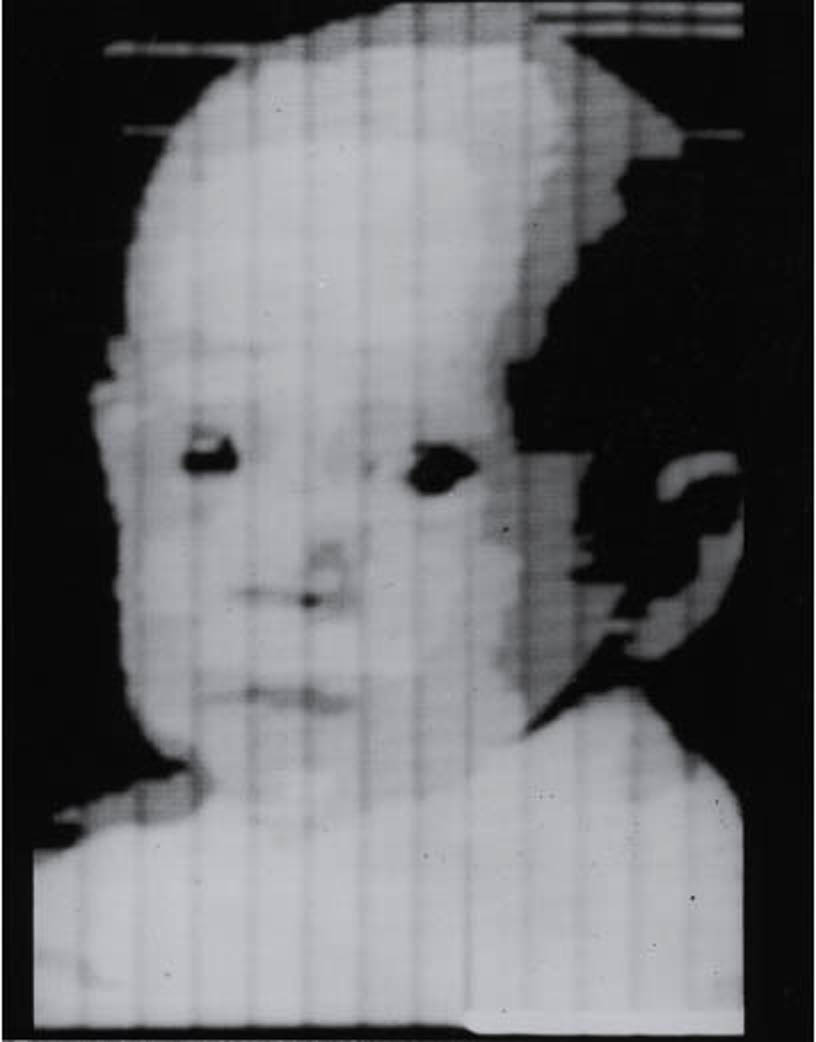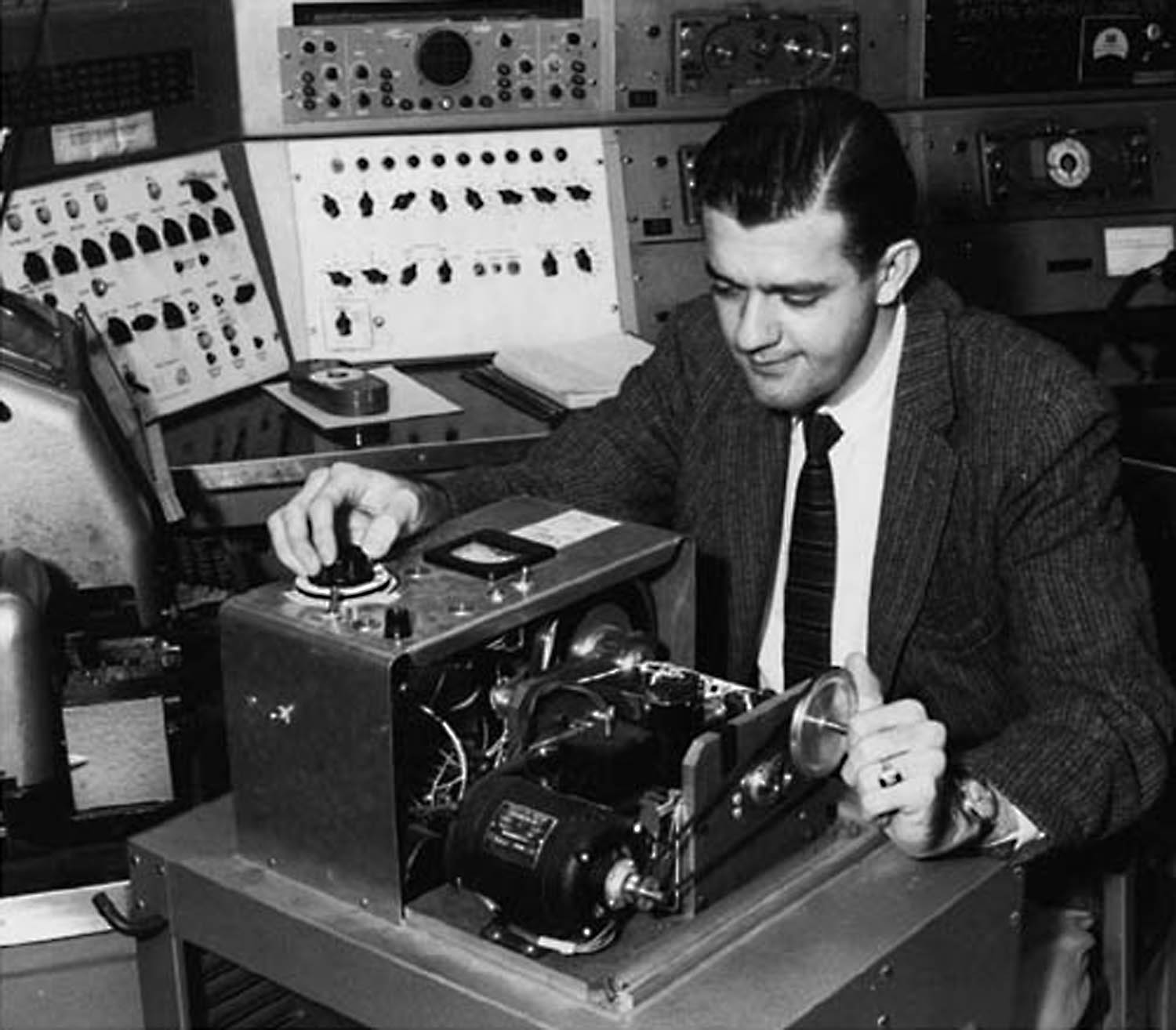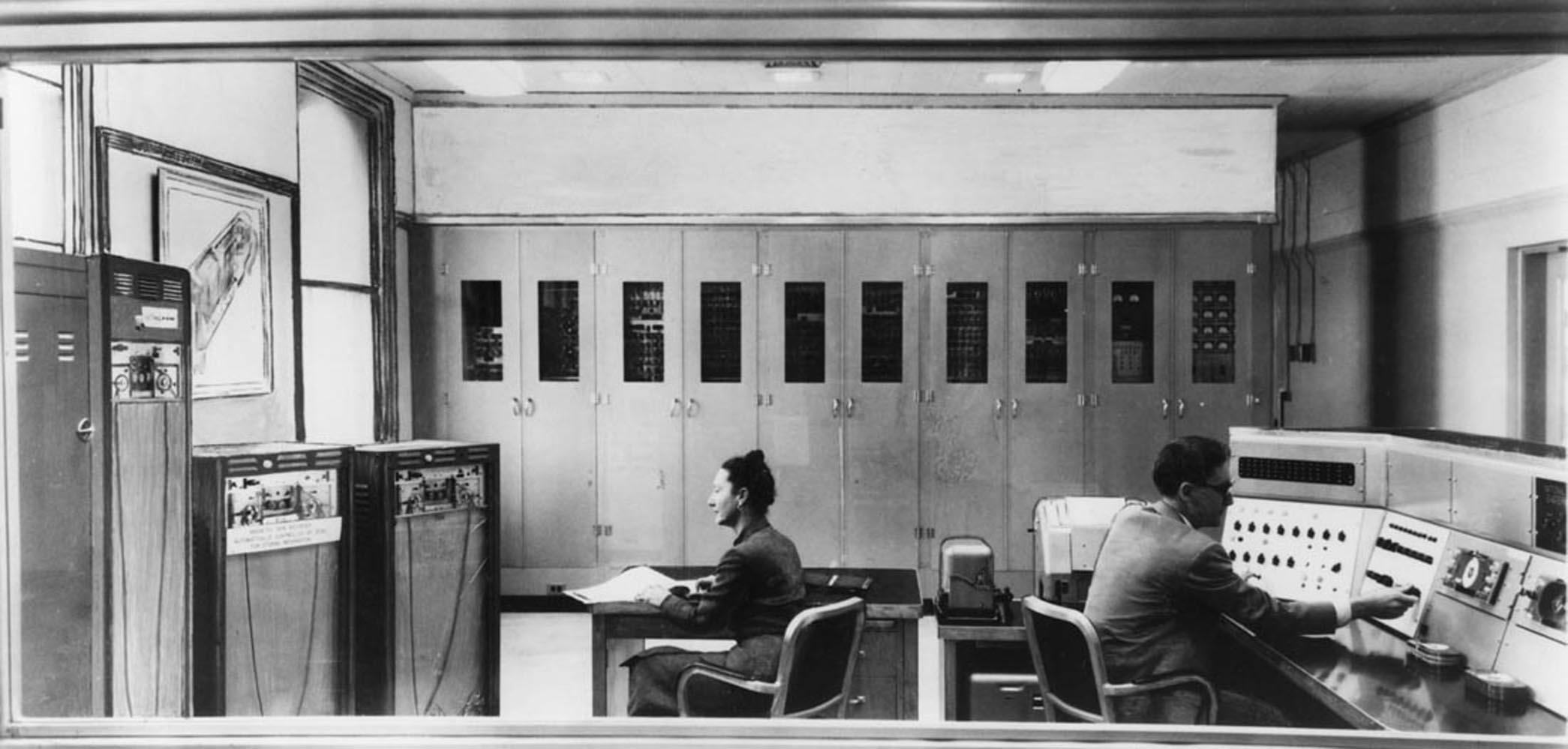
Figure 1 – The first digital image made on a computer in 1957 showed researcher Russell Kirsch’s baby son.
From NIST and in the public domain.
In researching yesterday’s blog about the first underwater photograph I came across another photographic first, which is shown in Figure 1 and is the first digital image ever taken. It was taken in 1956 at the then National Bureau of Standards (NBS), today the National Institute of Standards (NIST) by NBS scientist and computer pioneer Russel Kirsch, and is a black and white scan of a photograph of Kirsch’s son, Walden. Significantly, in 2003 the editors of Life magazine honored Kirsch’s image by naming it one of “the 100 photographs that changed the world.”

Figure 2 – National Bureau of Standards (NBS) researcher R.B. Thomas shown operating the SEAC scanner (the control console is in the background). From NIST and in the public domain.
By today’s standards it is a mere 176 pixels on a side. Kirsch and his colleagues developed the nation’s first programmable computer, the Standards Eastern Automatic Computer (SEAC) and additionally created a rotating drum scanner for image scanner. NBS researcher R.B. Thompson is shown at the extensive controls of the scanner in Figure 2. Before you read any further take a look at your digital camera. It contains a miniature microprocessor which is more powerful than the 1956 NBS computer used to control the scanner and for the image processing. This room size NBS computer is shown in Figure 3.
It truly gives one pause. Last year I discussed the first photograph ever put up on the internet. Amazingly, this was in 1992 almost forty years after this first digital photographic image. Kirsch’s image and the work of him and his colleagues is truly a tribute to geek power and inventiveness. It gives you a glimpse of why I love going into the lab every day. There is nothing better than sitting down with one’s colleagues and figuring out how to do the impossible. It is truly life’s greatest privilege!

